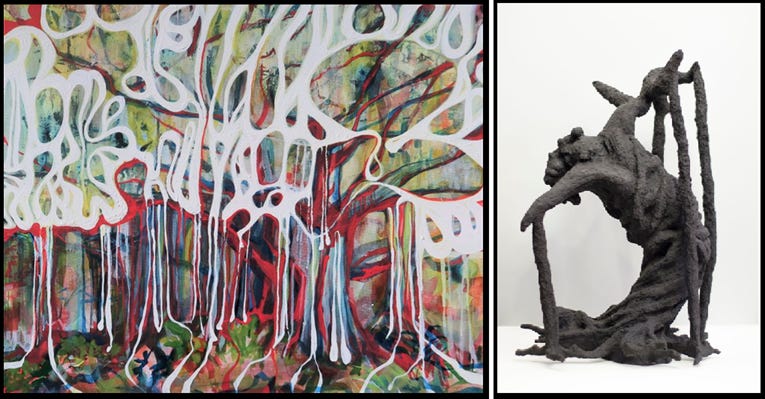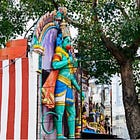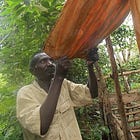An Ancient Fig Tree Inspired Hundreds of Interconnected Artworks
On a quiet day in June 2020, a stranger on a distant shore contacted me and blew my mind. He asked me to keep a secret for nearly a year.
That stranger was US-based artist Nathan Langston. He told me he had press-ganged some of my words into the service of an international art project called TELEPHONE. Nathan said that, at that moment, artists and poets and musicians all around the world were creating new work as a consequence.
Ten months after our call, Nathan unveiled the project’s final exhibition. With work by more than 900 artists in 72 countries, it is one of the largest collections of interconnected original art works in history.
TELEPHONE operated like the children’s game in which a message is whispered from person to person, changing as it goes, until the final version is often unrecognizable from the original.
Nathan’s team whispered a message from art form to art form. A sculpture could become a painting, then music, then poetry, then dance. TELEPHONE whispered each finished work of art to multiple artists so the game branched out exponentially.
Halfway through the game, the process reversed. The team started assigning multiple artworks to a single artist. So, TELEPHONE began with one message, passed that message through more than 900 artists and then concluded with a single artwork.
The secret that I kept is that the message Nathan chose to start the project was a four-sentence paragraph from my book about how fig trees have shaped our species and the world about us — see Nathan’s essay about the genesis of the project for details of why he chose those words.
Nathan sent my paragraph to six artists. They created two sculptures, a song, a piece of writing, a painting, a film. Those six works inspired a further sixteen, and so on. By the time the message had passed through 950 artists, it had travelled 7.7 million km around the world.
This project was beautiful in many ways. It took place during a year of COVID lockdowns and isolation, yet it connected people all around the world. As the coronavirus spread, so did the whispered message.
My text that Nathan used to start TELEPHONE was about a kind of fig tree called a banyan — specifically, the one that Alexander the Great and his army encountered when they arrived in India in 326 BCE. These strangler figs send roots down from their branches that thicken into stout pillars that resemble tree trunks. A banyan can have thousands of them, so can look like a forest of trees.

TELEPHONE is itself like a banyan. It is at once a collection of hundreds of artworks, and also a single gigantic creation. In an insightful article, Margo Vansynghel described the project’s conclusion:
After hundreds of translations, what started as a message about a banyan tree came out as an instrumental piano ballad by Hong Kong artist Priscila Chu. The piece, titled “Falling into place,” is based on two pieces of art. One is a short story by Danish writer Mikkel Rosengaard, wherein he deals with the grief of “the impermanence of things.” The other is a drawing, by German artist Leeorio (aka Lennart Schütt), about hope and overcoming obstacles.
I am so honoured to have played an unwitting part in this amazing project and I am in awe of the wave of creativity it has unleashed. The exhibition is open for you to explore. Have a wander in that forest of art. There are many paths to follow.
Do you or someone you know want to join TELEPHONE?
The project is running again in 2025. It has already inspired 1,117 original and interconnected works of art. But with four months to go, the TELEPHONE team wants even more writers, artists, musicians, photographers and all other creatives to join in. On Instagram this week, Nathan Langston wrote:
We dearly need every kind of artist, from every country on the planet to sign up to play so that we can continue to grow this vast and absurdly beautiful experiment until we publish the game globally on October 10th, 2025.Signing up is free and takes only minutes. You can do it at https://artists.telephonegame.art. PLEASE SHARE AND SHARE AND SHARE this invitation to every artist or arts board you know! With such love and excitement, xoxo TELEPHONE
Thanks for reading Planet Ficus. If you are new here, I recommend this article, which sets out what makes fig trees so important and what kinds of stories I will be sharing.
And here are some other recent articles you may have missed:








Love this! Reminds me of the Violette de Bordeaux Figs with calabrian chili oil & cured lardo recipe I adapted from California cuisine restaurant Rustic Canyon! check it out:
https://thesecretingredient.substack.com/p/get-rustic-canyons-recipe-violette